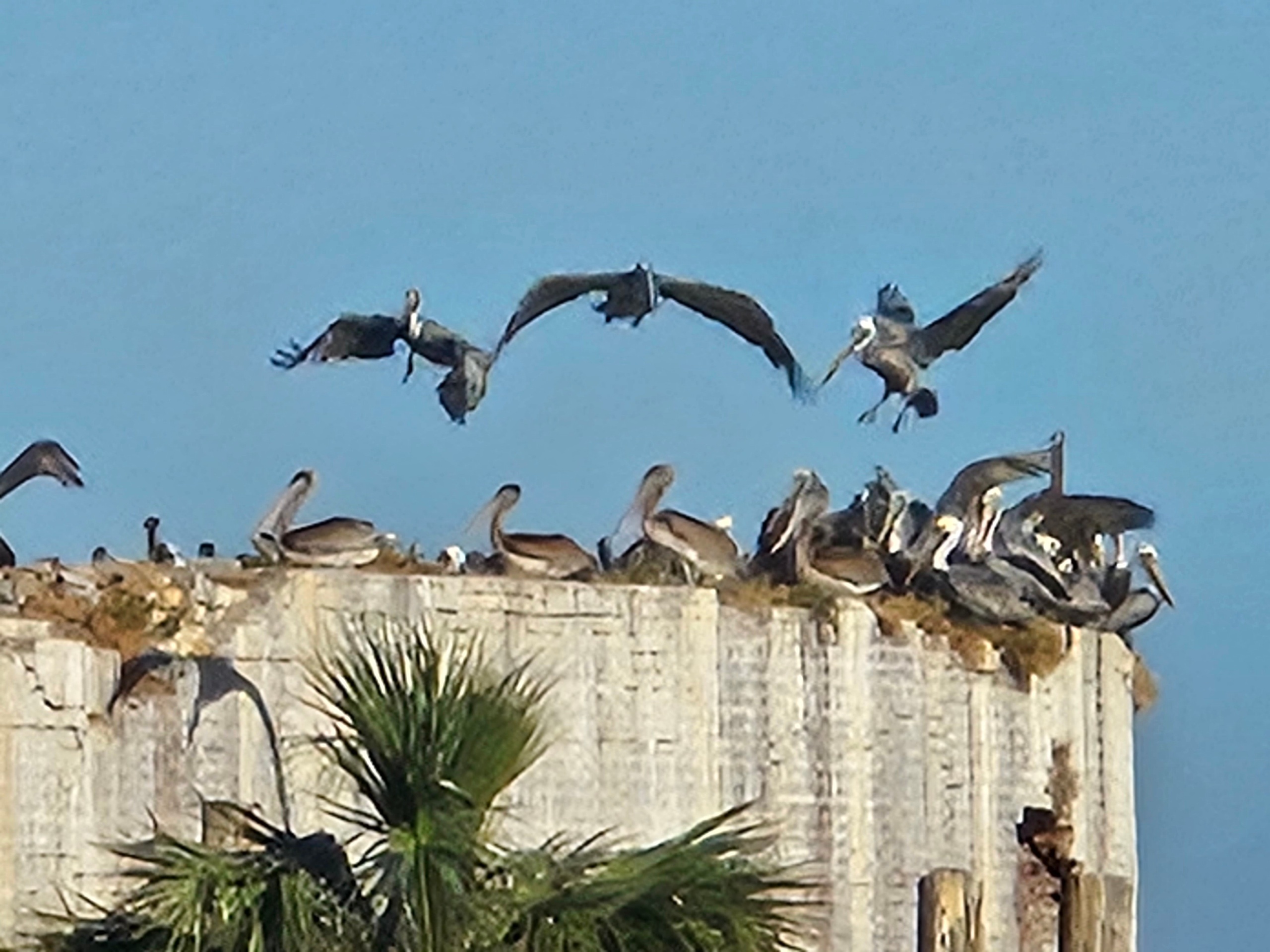Saltmarsh Serenade: A Marine Biologist–Guided Wildlife Cruise in Charleston Harbor
Guided by a marine biologist, this small-boat safari explores dolphins, pelicans, and the Lowcountry’s working tides.
The first light comes in quietly over Charleston Harbor, a soft pink wash that slides across the water as if the tide were painting it. The boat idles near the mouth of the Ashley, bow pointed toward the low silhouette of Fort Sumter. A pelican lifts from a channel marker, shakes off the night, and glides low—wingtips grazing a mirror that refuses to hold still. You feel the current nudge the hull, as if the harbor itself is itching to get going. Then a dorsal fin cleaves the surface, and the morning opens like a page. This is how a day begins when you ride with a marine biologist on a small-group wildlife tour of Charleston’s saltmarsh—a working classroom where tides dictate rhythm and life performs at eye level.
Trail Wisdom
Dress for wind, not just sun
Even on warm days, a breeze over open water can chill—pack a light windbreaker and a brimmed hat.
Use a polarized lens
Polarized sunglasses and filters cut glare so you can spot dolphins and fish below the surface and capture cleaner photos.
Keep a respectful buffer
Follow your guide’s distances around birds and dolphins—disturbance can disrupt feeding and nesting.
Non-marking soles only
Wear deck-friendly, non-marking shoes for better grip and to protect the boat.
Local Knowledge
Hidden Gems
- •Shutes Folly Island’s Castle Pinckney—bird roosts and harbor views
- •Crab Bank Seabird Sanctuary—observe from a respectful distance by boat
Wildlife
Atlantic bottlenose dolphin, Brown pelican
Conservation Note
Crab Bank and nearby rookeries are critical nesting grounds—boat slowly, keep your distance, and never land on protected islands.
Charleston Harbor’s Fort Sumter witnessed the first shots of the Civil War in April 1861; nearby Castle Pinckney has guarded the harbor since the early 1800s.
Seasonal Guide
spring
Best for: Active birdlife, Mild temperatures
Challenges: Occasional storms, Pollen in the air
Balanced tides and comfortable temps make spring excellent for wildlife viewing and photography.
summer
Best for: Early-morning dolphin activity, Long daylight hours
Challenges: Heat and humidity, Afternoon thunderstorms
Start early for calmer water and cooler temps; keep an eye on pop-up squalls.
fall
Best for: Migratory birds, Stable weather
Challenges: Variable wind shifts, Shortening days
Crisp air and clear light pair with peak migration for rewarding sightings.
winter
Best for: Clear air and visibility, Quiet waterways
Challenges: Chilly winds, Fewer departures
Bundle up—winter brings crisp light and fewer crowds, with steady dolphin presence.
Photographer's Notes
What to Bring
Polarized SunglassesEssential
Reduces glare off the water to spot wildlife and improves visibility for photography.
Light WindbreakerEssential
Blocks breeze on open water and packs small when the sun heats up.
Binoculars (8x–10x)
Brings distant birds and dolphins into crisp view without crowding wildlife.
Non-Marking Deck ShoesEssential
Grippy soles keep you steady on a wet deck and protect the boat’s finish.
Common Questions
What wildlife might I see on this tour?
Common sightings include Atlantic bottlenose dolphins, brown pelicans, herons, egrets, and seasonal migratory shorebirds; bald eagles and ospreys are also possible.
Is this trip suitable for kids and older adults?
Yes. The boat is stable, the pace is relaxed, and the guide tailors the route to the group. Guests should be able to step in and out of the boat with assistance.
When is the best time of day to go?
Mornings typically offer calmer water, cooler temperatures, and soft light; sunset departures trade calm for dramatic color and active birdlife.
What if the weather turns bad?
Safety comes first. The operator monitors forecasts and may delay, reroute, or reschedule for wind, lightning, or unsafe conditions.
Can I bring a camera and tripod?
Cameras are encouraged. Tripods are cumbersome on a moving boat—opt for a monopod or image-stabilized lenses instead.
Are snacks or drinks provided?
Bring your own water and snacks unless otherwise noted in your confirmation; pack out everything you bring.
What to Pack
Polarized sunglasses to cut glare and spot wildlife; lightweight windbreaker for the harbor breeze; water bottle and snacks to stay fueled; compact binoculars for bird and dolphin viewing without crowding.
Did You Know
Charleston Harbor’s Fort Sumter is where the first shots of the American Civil War were fired on April 12, 1861.
Quick Travel Tips
Arrive 15–20 minutes early to park, meet your guide, and review safety. Morning tours offer calmer water and better dolphin activity in summer. Bring a dry bag for phones and cameras. Tides shift conditions every few hours—trust your guide’s route changes.
Local Flavor
Post-cruise, walk the Shem Creek Boardwalk and watch shrimp boats unload; grab peel-and-eat shrimp or she-crab soup at local docksides. For a classic Lowcountry roast, head to Bowens Island Restaurant. Sample craft beers at Holy City Brewing and pick up benne wafers downtown as a sweet, sesame-kissed souvenir.
Logistics Snapshot
Closest airport: Charleston International (CHS), ~20 minutes to the harbor. Departure points vary around Charleston Harbor; most are 10–20 minutes from downtown. Cell service is generally strong near the city and waterways. No permits required for guests; follow captain’s instructions for safety and wildlife distances.
Sustainability Note
Saltmarshes are nurseries for 75% of coastal fish species—keep noise low, avoid wakes near shorelines, never feed wildlife, and follow NOAA marine mammal viewing guidelines. Pack out all trash and avoid landing on protected bird islands.
